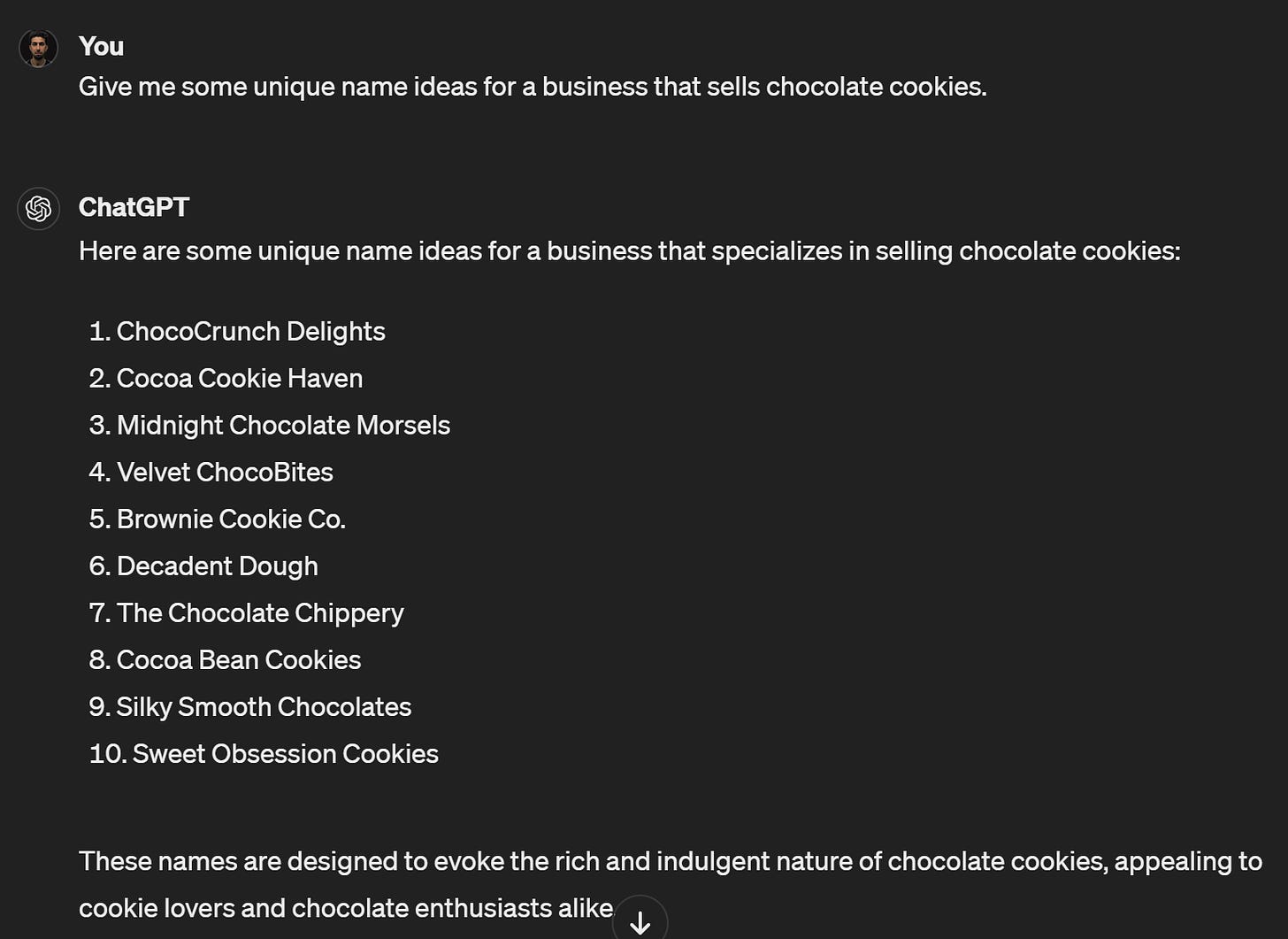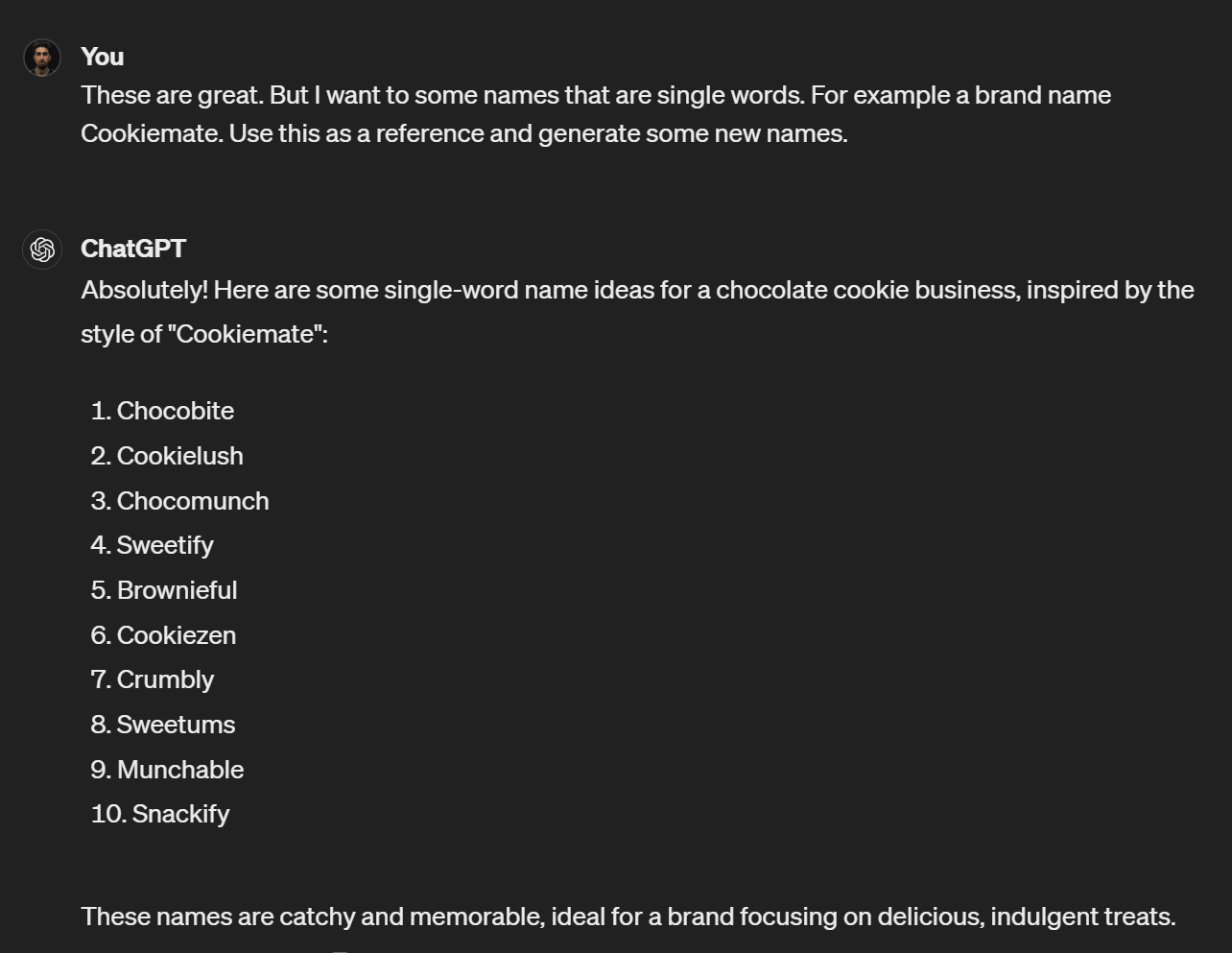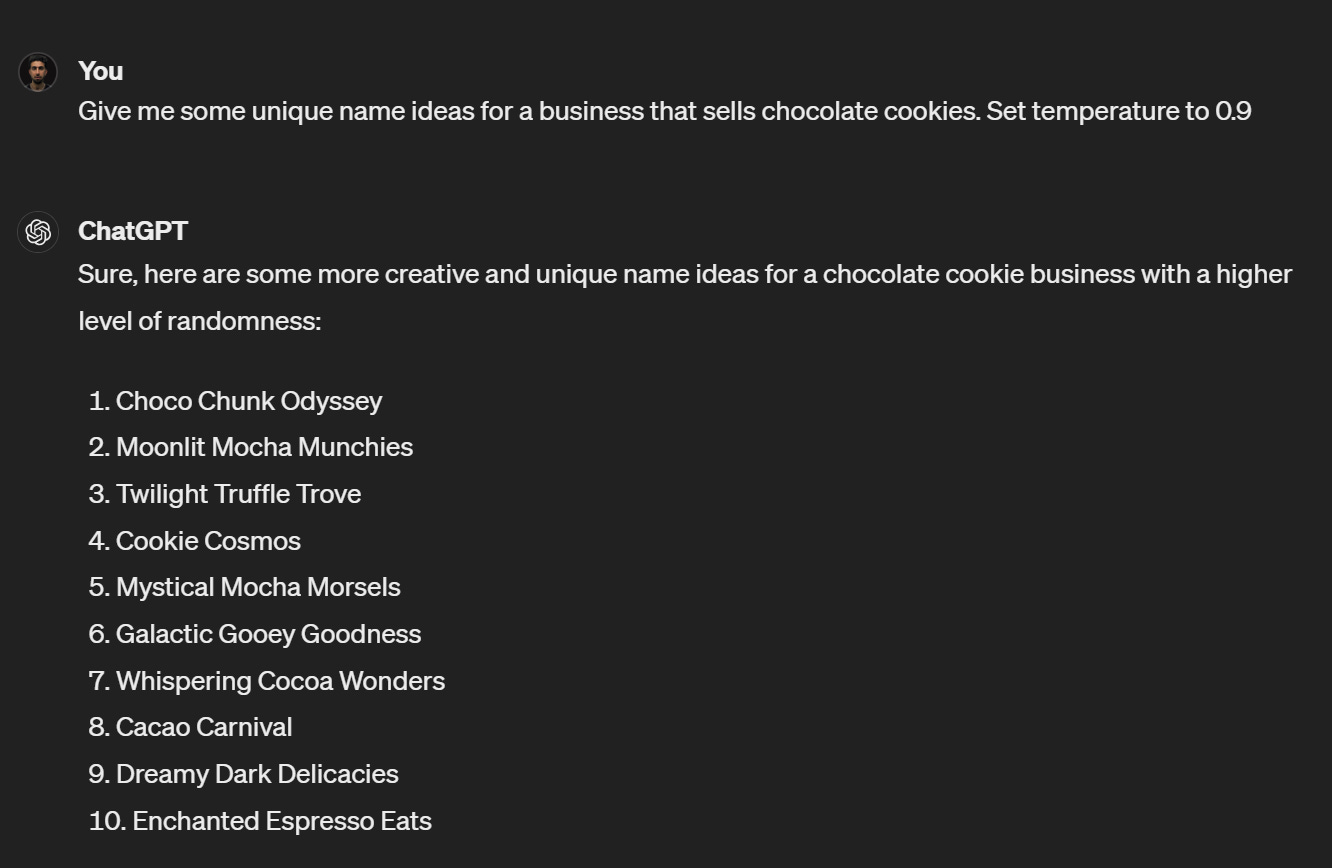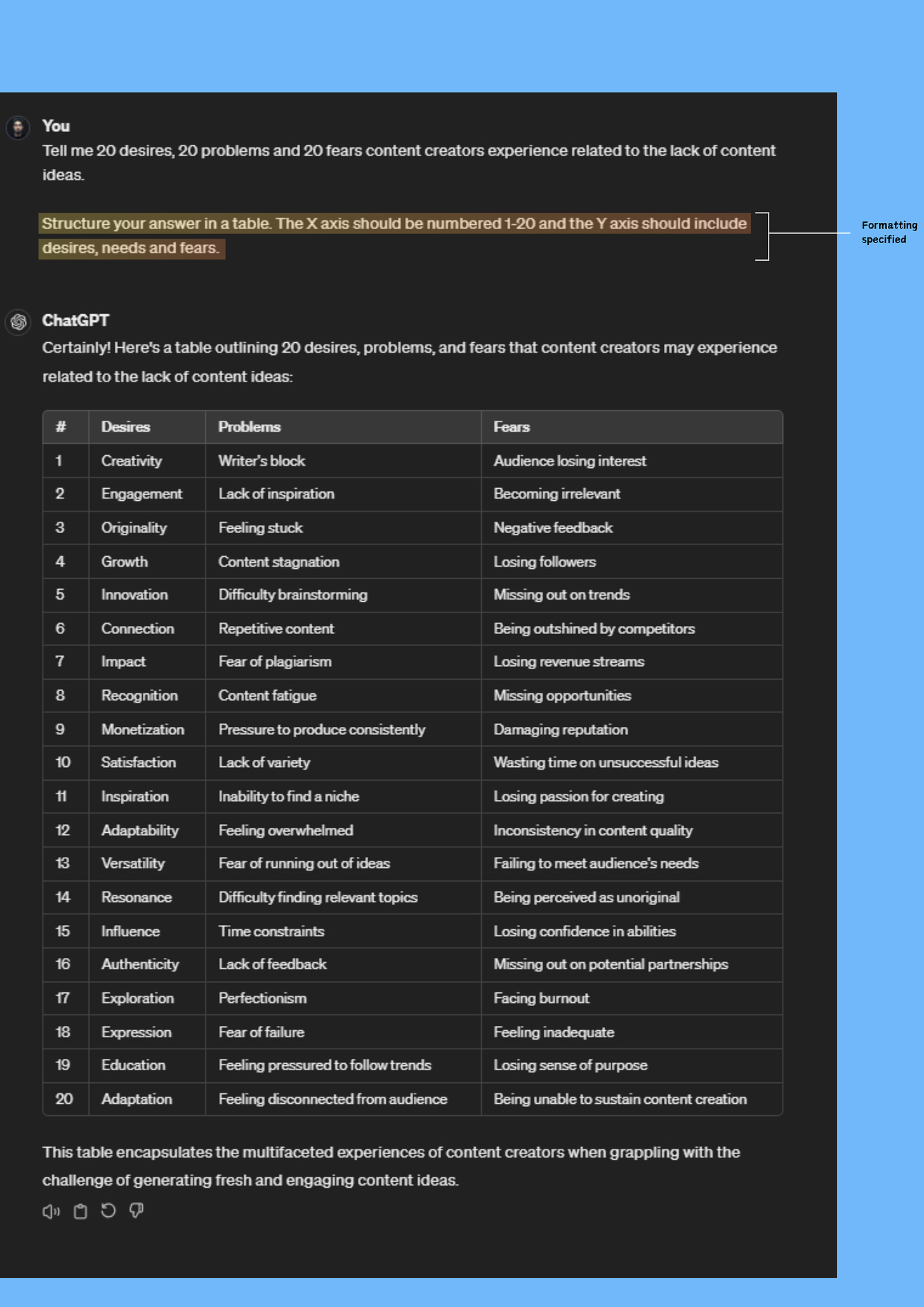ChatGPT has completely changed the way you brainstorm
Here's how I use it for brainstorming ideas:
Imagine you’re looking for some ideas to write a social media post.
Imagine you’re writing a sales email so you’re thinking of things that can convince the reader.
Or imagine you’re creating a business plan. You try to gather things that best work for your business.
All of these are brainstorming.
No matter what you do during your day, you brainstorm almost every time.
In most cases, it can be hard to brainstorm.
Some ideas might be hard to explore.
Or you might not have enough experience to know certain things.
In times like these, we would need some help.
A tool that can do more than half of the work in brainstorming.
Yup. Using ChatGPT.
It’s also true that ChatGPT cannot do what humans can do.
But it can come up with hundreds of ideas and thoughts that can inspire you immediately.
So it’s better to know how to brainstorm the right way.
And even more important, knowing how brainstorming with ChatGPT works.
So how to use ChatGPT for brainstorming:
1. Ask it open-ended questions:
Imagine you’re asking a human a close-ended question.
What will he offer in his response other than just a word or two?
Think. We use open-ended questions to widen the response and know better.
And in the case of ChatGPT too, brainstorming is a way of going through a wide range of ideas.
So you better keep your prompts open-ended.
In other words, give ChatGPT more clues to understand what you want.
Check this out:
“Give me some unique name ideas for a [whatever you want].”
“Can you give me some unique name ideas for a [whatever you want]?”
Even though I didn’t ask it a question because giving it a command works better than a question, you can always start the prompt with “Can you”.
Using open-ended prompts helps ChatGPT come up with multiple details.
This also lets the machine understand your demand better.
Look at the names it generated in photo 1. They are much better than many names you may see around.
You can even get inspiration from these names and come up with your preferred name.
Let’s get more specific in this prompt:
“These are great. But I want some names that are [Feature]. For example a brand name [a name you like]. Use this as a reference and generate some new names.”
Yup. We took it to a more specific level.
Did you notice what adjustments were made to the prompt?
2. Use the temperature parameter for extra creativity
Temperature is a ChatGPT parameter on a scale from 0 to 1.
It adds randomness to the response.
A temperature of 0 will come up with a more logical and straightforward output while 1 will generate a more random and creative response.
So if you want a more creative response, use the temperature parameter.
Even more creative than you can think of.
Let’s try it with a lower temperature first:
Yeah. Not much creative.
Now look at a much higher temperature prompt:
See the difference?
3. Ask follow-up questions
The more you keep asking questions the better ChatGPT gets.
“Why is that?”
It builds more context.
It trains ChatGPT each time so and lets it understand better what you want and what you don’t want.
It’s like a child growing up and being fed with information.
Usually, it won’t generate a far better output after your initial prompt.
That’s why it’s recommended to try at least one follow-up prompt.
4. Specify the output format
Imagine you’re trying to brainstorm some content ideas.
You refer to ChatGPT to ask for some creative ideas that can inspire you.
In this case, the best formatting will be tables or lists.
They easily let you skim through all the ingredients they provide.
Plus, it keeps your vision and thoughts organized.
There are a bunch of content formats.
For some people, going through tables works. For others, lists and outlines work better.
You just have to decide the right one for you.
Then, it’s not hard to prompt ChatGPT to use that specific format while brainstorming
Look at the prompt below where I specified the format.
Then have a look at the table it generated.
Pretty neat. Isn’t it?
5. Criticize or verify an existing output
I used to ask ChatGPT a question and then leave that chat when I first started using it.
Even when I was satisfied with the output, it could’ve done even better with a little push, criticizing or verifying its response.
ChatGPT loves both being criticized and being verified.
Criticism lets it come up with a different response.
Verification lets it keep its hands on the same rope and pull it even harder, coming up with an even better quality of that output.
Every time you use it for brainstorming, try to question it or admire it.
If you like an output but want an even improved version of it, add some adjustments to the prompt.
If it comes up with an output that isn’t your favorite, repeat that process.
Do it until you see your desired output.
And if you don’t like the output at all, try criticizing it.
Prompt it on changing what you don’t like.
It’s better to continue chatting in the same chat than starting a new one.
It’s because the more you chat with it the better it gets trained thus bringing an even more accurate response to the table.
OK. So much ChatGPT ChatGPT!
Tell me how was your weekend?










